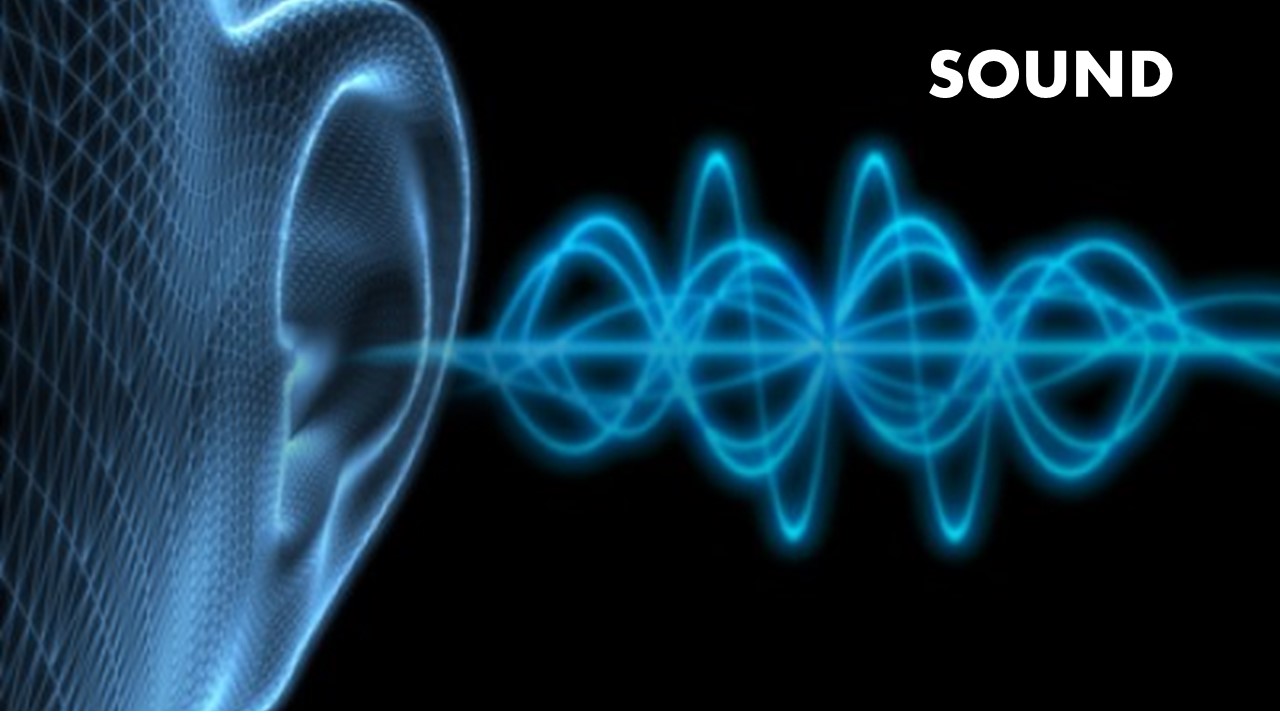STD IX – SOUND WAVES – ARCHIMEDES
About Course
In this section will learn the following chaphter:
1.PROPAGATION OF SOUND WAVES
2.ULTRASONIC WAVES
Last Updated:November 7, 2024
0(0 Ratings)
Share Course
Page Link
Share on social media

Description
PROPAGATION OF SOUND WAVES
Production of Sound:
Sound is produced by vibrating objects. The matter or substance through which sound is transmitted is called a medium.
Sound may be produced in a variety of ways, normally as a result of some mechanical disturbance on an object, causing it to vibrate.
Propagation of Sound:
Sound is propagated by means of longitudinal waves though an elastic medium.
Sound travels through gases, liquids and solids. The speed of sound is the maximum in solids, less in liquids and the least in gases.
Characteristics of a sound wave:
• Wavelength
• Amplitude
• Frequency
• Time period
• Velocity
Terms associated with sound waves
• Pitch
• Loudness
• Intensity of sound
• Quality or timber of sound
• Speed of Sound in different media
ULTRASONIC WAVES
Infrasonic, Sonic and Ultrasonic frequencies
Reflection is the change in direction of a wave front at an interface between two different media so that the wave front returns into the medium from which it is originated.
As we know sound is a wave. We also know that all forms of waves reflect. Hence it is a must that sound waves also reflect.
In this section we will see how sound is reflected, what are the uses of this reflection and how do we hear sound wave.
Echo
An echo is the repetition of sound that results as a reflection from a surface.
If we shout or clap near a suitable reflecting object such as a tall building or a mountain, we will hear the same sound again a little later.
The sensation of sound persists in our brain for about 0.1 s.
For hearing distinct echoes, the minimum distance of the obstacle from the source of sound must be 17.2 m. This distance will change with the temperature of air.
Reverberation
The persistence of sound in big enclosures like auditoriums is the result of repeated reflections of sound and is called reverberation.
Generally, the ceilings of concert halls, conference halls and cinema halls are curved so that sound after reflection reaches all corners of the hall.
Range of hearing
A human ear can hear sounds with a frequency of 20 hertz to 20000 hertz. This range of frequency is called the audible range. The audible range for different species is different.
Children under the age of five and some animals, such as dogs can hear up to 25 kHz.
Sounds of frequencies below 20 Hz are called infrasonic sound or infrasound.
Frequencies higher than 20 kHz are called ultrasonic sound or ultrasound.
Applications of ultrasound
Ultrasound is generally used to clean parts located in hard-to-reach places, for example, spiral tube, odd shaped parts, electronic components etc.
Ultrasounds can be used to detect cracks and flaws in metal blocks.
Ultrasonic waves are made to reflect from various parts of the heart and form the image of the heart, this technique is called ‘echocardiography’
Sonar
The acronym SONAR stands for Sound Navigation and Ranging.
PROPAGATION OF SOUND WAVES
Production of Sound:
Sound is produced by vibrating objects. The matter or substance through which sound is transmitted is called a medium.
Sound may be produced in a variety of ways, normally as a result of some mechanical disturbance on an object, causing it to vibrate.
Propagation of Sound:
Sound is propagated by means of longitudinal waves though an elastic medium.
Sound travels through gases, liquids and solids. The speed of sound is the maximum in solids, less in liquids and the least in gases.
Characteristics of a sound wave:
• Wavelength
• Amplitude
• Frequency
• Time period
• Velocity
Terms associated with sound waves
• Pitch
• Loudness
• Intensity of sound
• Quality or timber of sound
• Speed of Sound in different media
ULTRASONIC WAVES
Infrasonic, Sonic and Ultrasonic frequencies
Reflection is the change in direction of a wave front at an interface between two different media so that the wave front returns into the medium from which it is originated.
As we know sound is a wave. We also know that all forms of waves reflect. Hence it is a must that sound waves also reflect.
In this section we will see how sound is reflected, what are the uses of this reflection and how do we hear sound wave.
Echo
An echo is the repetition of sound that results as a reflection from a surface.
If we shout or clap near a suitable reflecting object such as a tall building or a mountain, we will hear the same sound again a little later.
The sensation of sound persists in our brain for about 0.1 s.
For hearing distinct echoes, the minimum distance of the obstacle from the source of sound must be 17.2 m. This distance will change with the temperature of air.
Reverberation
The persistence of sound in big enclosures like auditoriums is the result of repeated reflections of sound and is called reverberation.
Generally, the ceilings of concert halls, conference halls and cinema halls are curved so that sound after reflection reaches all corners of the hall.
Range of hearing
A human ear can hear sounds with a frequency of 20 hertz to 20000 hertz. This range of frequency is called the audible range. The audible range for different species is different.
Children under the age of five and some animals, such as dogs can hear up to 25 kHz.
Sounds of frequencies below 20 Hz are called infrasonic sound or infrasound.
Frequencies higher than 20 kHz are called ultrasonic sound or ultrasound.
Applications of ultrasound
Ultrasound is generally used to clean parts located in hard-to-reach places, for example, spiral tube, odd shaped parts, electronic components etc.
Ultrasounds can be used to detect cracks and flaws in metal blocks.
Ultrasonic waves are made to reflect from various parts of the heart and form the image of the heart, this technique is called ‘echocardiography’
Sonar
The acronym SONAR stands for Sound Navigation and Ranging.
Free
Free
Free access this course
-
LevelIntermediate
-
Total Enrolled2
-
Last UpdatedNovember 7, 2024
-
CertificateYes
Hi, Welcome back!
Material Includes
-
Live Interactive classes with in-class doubt solving
-
Weekly Test and Quiz with instant tracking for progress
-
Revision of the course after testing
-
Fortnightly Parents and Tutor interactions
-
Expert monitoring of student's learning progress
-
Daily communication over call, whatsapp and mail
-
3 hours on-demand video
-
4 downloadable resources
-
Access for entire Academic Year
-
Access on mobile and Desktop
-
Assignments and review of the same
-
Tests and Correction by Board paper checkers
-
Certificate of completion and Live tracking with Grade book
Course Duration:
0
Course level:Intermediate
Enrolled:2
About Course
In this section will learn the following chaphter:
1.PROPAGATION OF SOUND WAVES
2.ULTRASONIC WAVES
Course Curriculum
PROPAGATION OF SOUND WAVES
Sound and it's production from vibrations
Propagation of Sound in a medium
Terms related to Wave Motion
Speed of Sound in different Media
Factors affecting Speed of Sound
-
10:20
-
16:41
-
12:59
-
19:03
-
12:49
-
08:51
-
14:47
-
14:10
-
14:27
-
06:05
-
09:22
-
18:17
-
18:17
ULTRASONIC WAVES
Infrasonic
Sonic
Ultrasonic
Elementary ideas and simple applications
Difference between Infrasonic and Ultrasonic
ADDITIONAL MATERIAL
-
02:11
-
04:00
-
18:31
-
16:46
-
01:17
-
01:09
ASSIGNMENT AND DUE DATES
-
QUESTION SET – SOUND – WORKSHEET
-
QUESTION KEY – LAWS OF MOTION, UPTHRUST, SOUND, LIGHT, ELECTRICITY – WORKSHEET-12022024
-
QUESTION KEY – IX – SOUND – WORKSHEET SET A – 12072024
Student Ratings & Reviews

No Review Yet

